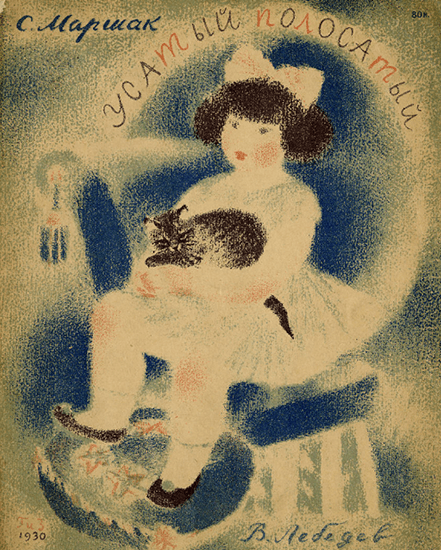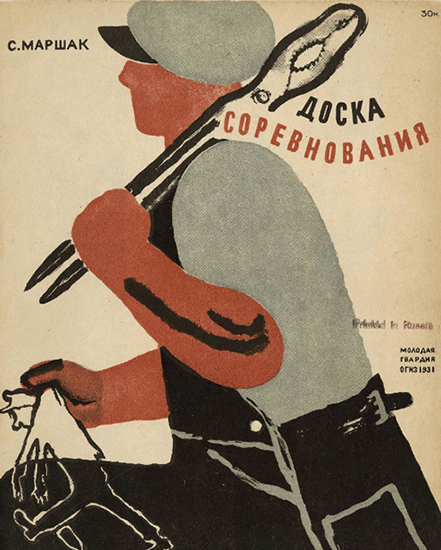The End of the Avant-Garde Picture Book & the Attacks on Marshak & Lebedev

Towards the end of the 1920s, the political atmosphere in the USSR changed: the publishing house Raduga was shut down, and writers and artists overall were pressured to conform to new ideological rules. In the 1930s, both Marshak and Lebedev were attacked in the press for not conforming to Soviet ideology. An article published in 1930 captured the tone: "About the Cute Little Grey Hare or the First Five Year Plan? Against Apolitical Children's Literature." The radical left critics associated with RAPP and Litfront were particularly vociferous. In 1932, Marshak's works were lambasted for offering mere "entertainment" and lacking "propaganda value"; his poem Fire (Pozhar) was criticized for emphasizing the heroine's "private concerns" instead of the "socialist economy." In 1934, Socialist Realism was officially introduced as official policy, which stressed that the writer's role was to "educate with the aid of positive heroes" and depict the "revolutionary transformation of reality" (Hellman 2013, 358–59, 366).
Lebedev, meanwhile, was also attacked for his "formalist tendencies." In 1936 an article in Pravda described his art as a "macabre and ugly fantasy" while another article in Detskaia literatura in the same year also singled him out: "Instead of concrete images of realistically rendered distinguished workers of the Soviet Union, Lebedev depicts schematic lifeless mannequins" (quoted in Rosenfeld 2003, 215 & 253). Soviet repression also extended to the remarkable circle of artists and writers that both Marshak and Lebedev had mentored. Many of their artistic colleagues, such as the artist Vera Yermolaeva and the writers Alexander Vvedensky and Nikolai Oleinikov, were imprisoned and executed during the Stalinist years.
Workers Fulfill the Five-Year Plan: The Board of Competition

Both Marshak and Lebedev survived by abandoning their avant-garde experiments of the 1920s. "Although many other artists, writers, and intellectuals would not survive the Stalinist purges that peaked in the 1930s, Marshak and Lebedev successfully adapted to changing conditions . . . In order to survive, however, Marshak and Lebedev, like many others, were compelled to leave all avant-garde innovation behind" (Weld 2018, 3).
One example of their turn towards a more politically palatable topic early on is The Board of Competition (Doska sorevnovaniia, 1931), which depicts workers striving to achieve greater productivity. On the front cover, a productive, successful worker holds up a lazy, drunken, unproductive worker, like a tiny ragdoll. The book was created in the context of the Five-Year Plan, introduced by Stalin in 1928 with the aim of ending private commerce, achieving rapid industrialization, and creating new "production targets" for factories (Service 1997, chap. 9). In another sign of his adaptation to the times, Lebedev also illustrated several new editions of the works he created with Marshak in the 1920s, recalibrating the visual style to fit the ideology of the new era (see Weld 2018, chap. 11).
Despite this repressive turn, the achievements of Marshak and Lebedev in the 1920s remain unparalleled. "In books like Baggage, Circus, and Ice Cream . . . bright, geometrically precise shapes in solid color (lithoprints) formed schematized figures lacking . . . any context . . . This too was a manifesto, a world vision diametrically opposed to the life-building aesthetic of turn-of-the-century style moderne with its thick, almost overpowering sense of context" (Steiner 1999, 53–54).
